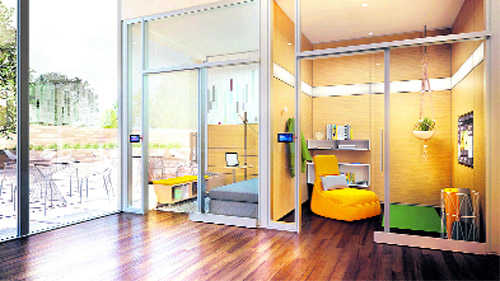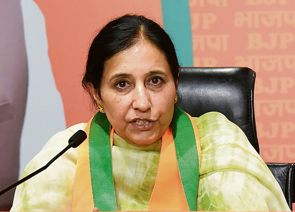
Praveen Rawal
Private offices are usually thought of as traditional work spaces that force some difficult tradeoffs: workers get more privacy but less interaction with others, plenty of quiet concentration but no collaboration, and great image and status but limited function and flexibility. About one-third of all office workers have a private office, but many of those pricey spaces haven’t kept up with the times. Since private offices usually house a company’s highest paid workers, how effectively those workers are supported in private offices is an important business issue.
Many private offices today fail miserably at supporting new ways of working. They provide no separation between the private, contemplative area of the space, and the public, collaborative area, making it hard for workers to easily engage others. They also lack easy access to tools and visual displays for communicating ideas and information, a key to switching from individual work to collaborative work.
Private office issues range from how people store and access information to how they access technology. From how the workspace reflects their standing in the organisation to how well the space helps the organisation’s culture endure. Here are some design strategies for rethinking and reshaping the private office, making it more effective:
Provide zones for different work modes
Throughout the day, people switch back and forth between concentration and contemplation, then collaborate and converse. Back and forth. Zones for different activities help workers smoothly transition from working alone to working with others. Simple tools can help manage and display information: tackboards, markerboards, and sliding screens that can hide or reveal information as needed. Desk chairs are not going away, but research shows that people want to modify their posture during the day. Provide standing areas, places to perch, lean or lounge. Lounge seating supports individual contemplative work and also welcomes colleagues.
Maximise efficiency of space
Eliminate dead space and maximise usable vertical space to make a small office feel larger, more open. Put areas for conversation and collaboration close to the entry. Place heavy storage low, and tall storage only on one wall. Choose guest seating that nests under the work surface. Even just a cushioned top on low lateral storage can provide space-efficient guest seating.
Better accommodate technology
This means allowing workers to select the best locations for their technology tools. Often, private offices limit worker access to power and data. However, the office's usable space expands when it allows flexibility for primary and secondary technology tools. Provide power and data outlets that let people work away from walls and corners and closer to visiting colleagues.
Make space personal
Private offices often reflect professional achievements. This may influence the size and design of the office itself. A flexible private office lets people make space their own by choosing how they host guests, what personal items they display, and how they stay connected to coworkers. To help them maximise productivity, provide display space that doesn't interfere with work. Shelves are commonly used for personal display, but consider an alternative: long worksurfaces that extend beyond the primary work area. This extra space provides ample room for work, and additional display space at seated eye-level.
Provide privacy and control
A traditional advantage of the private office is the ability to concentrate and protect confidential information. Yet this security and control is compromised if workers are approached from behind by guests entering the office. And while privacy is often an advantage, it can become a barrier to connecting with coworkers. The primary chair should face the door, or be in profile to the door. Define a collaborative zone and a private work zone, and provide piling areas that are out of sight to guests, but accessible to the primary worker.
Plan for solo and team work
In shared private offices, provide acoustical privacy for phone and laptop work, and a collaboration zone for working on documents with others, and for displaying information for group review and editing. Storage between workstations can provide both seated privacy and a common worksurface when standing. Place monitors where two people can easily view them in a side by side, collaborative posture.Smaller private offices need access to nearby meeting spaces, which provide both group collaboration space and a refreshing change of venue.
Enhance alternative posture
The conventional private office typically provides a work chair behind the desk and guest seating in front. But people are most comfortable if they adopt a variety of postures throughout the day. Private offices can provide standing-height surfaces, collaborative seating side-by-side or at ninety degrees, plus support formal and relaxed postures. Worksurfaces that adjust from seated to standing height add ergonomic and productivity benefits.
— The writer is Managing Director Steelcase India and Southeast Asia



























